
The Pot Book: A Complete Guide to Cannabis
by
Julie Holland
Published 22 Sep 2010
Sale, delivery, or cultivation of greater than twenty-five pounds is considered trafficking, and all trafficking offenses have mandatory minimum sentences. For less than two thousand pounds or fewer than two thousand plants, there is a mandatory minimum sentence of three years and a fine of $25,000. For less than ten thousand pounds or fewer than ten thousand plants, there is a mandatory minimum sentence of seven years and a fine of $50,000. For ten thousand pounds or ten thousand plants or greater, the mandatory minimum sentence is fifteen years in prison and a fine of $200,000. Any sale or delivery occurring within one thousand feet of a school, college, public park, public housing, daycare center, or church is punishable by up to fifteen years in prison and a fine of $10,000.
…
For fifty pounds or more, the penalty increases to a mandatory minimum of one year in prison and a possible range of thirty-six months to fifteen years in prison and a fine of $500 to $10,000. For cultivation or sale of one hundred pounds or more, the mandatory minimum sentence is three years and up to fifteen years in prison, along with a fine of $2,500 to $25,000. For two thousand pounds or more, the penalties increase to a mandatory minimum five-year sentence up to fifteen years in prison and a fine of $5,000 to $50,000. For any amount of ten thousand pounds or more, the mandatory minimum sentence is ten years with up to fifteen years in prison possible and a fine of $20,000 to $200,000.
…
Sale or delivery of ten pounds or more is considered trafficking, and all trafficking offenses are subject to mandatory minimum sentences. For trafficking of less than one hundred pounds, the mandatory minimum sentence is one year with a maximum of ten years and a fine of $10,000. For sale or delivery of less than two thousand pounds the mandatory minimum sentence is twenty-five years in prison and a fine of $25,000. For less than ten thousand pounds the penalty is also a minimum of twenty-five years in prison, and the fine increases to $50,000. For amounts of ten thousand pounds or more, the mandatory minimum is twenty-five years with a maximum of thirty and a fine of $200,000.
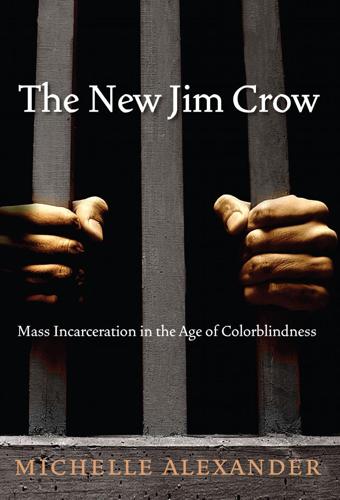
The New Jim Crow: Mass Incarceration in the Age of Colorblindness
by
Michelle Alexander
Published 24 Nov 2011
Thus it was that everyone in his San Francisco courtroom watched in stunned silence as Schwarzer, known for his stoic demeanor, choked with tears as he anguished over sentencing Richard Anderson, a first offender Oakland longshoreman, to ten years in prison without parole for what appeared to be a minor mistake in judgment in having given a ride to a drug dealer for a meeting with an undercover agent.84 Even Supreme Court Justice Anthony Kennedy has condemned the harsh mandatory minimum sentences imposed on drug offenders. He told attorneys gathered for the American Bar Association’s 2003 annual conference: “Our [prison] resources are misspent, our punishments too severe, our sentences too loaded.” He then added, “I can accept neither the necessity nor the wisdom of federal mandatory minimum sentences. In all too many cases, mandatory minimum sentences are unjust.”85 The Prison Label Most people imagine that the explosion in the U.S. prison population during the past twenty-five years reflects changes in crime rates.
…
The new Anti-Drug Abuse Act authorized public housing authorities to evict any tenant who allows any form of drug-related criminal activity to occur on or near public housing premises and eliminated many federal benefits, including student loans, for anyone convicted of a drug offense. The act also expanded use of the death penalty for serious drug-related offenses and imposed new mandatory minimums for drug offenses, including a five-year mandatory minimum for simple possession of cocaine base—with no evidence of intent to sell. Remarkably, the penalty would apply to first-time offenders. The severity of this punishment was unprecedented in the federal system. Until 1988, one year of imprisonment had been the maximum for possession of any amount of any drug.
…
In 1986, Congress passed The Anti-Drug Abuse Act, which established extremely long mandatory minimum prison terms for low-level drug dealing and possession of crack cocaine. The typical mandatory sentence for a first-time drug offense in federal court is five or ten years. By contrast, in other developed countries around the world, a first-time drug offense would merit no more than six months in jail, if jail time is imposed at all.68 State legislatures were eager to jump on the “get tough” bandwagon, passing harsh drug laws, as well as “three strikes” laws mandating a life sentence for those convicted of any third offense. These mandatory minimum statutory schemes have transferred an enormous amount of power from judges to prosecutors.

Cocaine Nation: How the White Trade Took Over the World
by
Thomas Feiling
Published 20 Jul 2010
Prosecutors would be able to appeal sentences, a right that had previously been reserved for the defence. Congress also made twenty-six crimes, all related to drug sales and distribution, punishable by a mandatory minimum sentence. This proved to be the single most dramatic change ushered in by the anti-drugs legislation of 1986, one that inadvertently sent a generation of black American men to prison. Mandatory minimum sentences had first been passed by Congress for the crime of piracy in 1790. The fifty-eight mandatory minimum sentencing laws passed between then and 1986 are an indicator of the crimes most feared and loathed in their day, from ‘the practise of pharmacy in China’ in 1915, to ‘treason and sedition’ in the McCarthy era, to ‘skyjacking’ in the 1970s.
…
Bill Clinton, who was President at the time, has since admitted his regret at not having done more to end the disparity in sentencing of powder and crack cocaine offenders, and has even said that he would be prepared to spend a significant portion of his life trying to make amends.41 Not until 2007 did the Supreme Court rule that federal judges could impose shorter sentences for crack cocaine offences.42 In an appeal case that came to court that year, Justice Ruth Bader Ginsburg said that a fifteen-year jail term given to Derrick Kimbrough, an African-American veteran of the first Gulf War, was acceptable, even though mandatory minimum sentencing guidelines called for Kimbrough to serve between nineteen and twenty-two years behind bars for his role in a crack-dealing operation. In the second case decided by the court, which did not involve cocaine, the justices upheld a sentence of probation for Brian Gall, who was white, for his role in a conspiracy to sell 10,000 ecstasy pills. There are no mandatory minimums for the possession or sale of ecstasy.43 Even without the system of mandatory minimum sentences, this inconsistency in the way the police and judges treat cocaine and crack cocaine dealers is apparent in the United Kingdom too.
…
Bill Clinton’s older brother Roger was sentenced to two years in prison in 1984 for selling cocaine. Had his case come to court after the mandatory minimums for crack- and cocaine-selling were made law, he would have received a ten-year term without parole. Had he sold the same quantity in crack form, he would have been looking at a life sentence. There had been a clear need to set a benchmark because until 1986 judges had handed down wildly varying sentences for drug offences, usually according to the judges’ political sympathies. But mandatory minimum sentences effectively took all power of discretion away from the judges. Mitigating factors such as a defendant’s role in the crime, and the likelihood of recidivism were deemed unimportant.
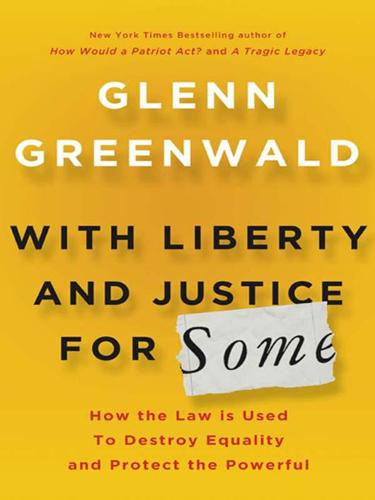
With Liberty and Justice for Some: How the Law Is Used to Destroy Equality and Protect the Powerful
by
Glenn Greenwald
Published 11 Nov 2011
The rates of violent crime in all those countries are lower than America’s, and their rates of property crime are comparable. One of the most disturbing aspects of the American approach to crime is the embrace of mandatory minimum sentencing schemes, which eliminate mercy and flexibility by denying judges the ability to adjust sentences when circumstances merit. These laws force the courts to subject all convicted defendants to unyielding harshness, even when doing so produces gross injustice. The advocacy group Families Against Mandatory Minimums has documented numerous travesties resulting from these mandatory sentencing rules, such as cases where young adults convicted of petty drug offenses were sentenced to decades in prison.
…
Today, it is commonplace for politicians in both parties at the federal, state, and local levels to compete with one another over who can advocate the most draconian punishments for ordinary Americans. During the Democrats’ protracted 2008 primary fight, Hillary Clinton attacked Barack Obama by claiming that he was too liberal to win the election. Asked for specifics, her campaign pointed to a 2004 statement in which Obama had advocated the abolition of mandatory minimum sentences for federal crimes. As president, Obama himself has demonstrated a readiness to follow his predecessors and position himself as a law-and-order politician. In April 2010, he gave an interview about “judicial activism”—that is, courts acting beyond their authority—which echoed Nixonian complaints about the Warren Court.
…
The trigger point for severe sentences for powder cocaine possession, by contrast, was a hundred times higher. Defendants convicted with just five grams of crack cocaine, the weight of less than two sugar packets and a quantity that yields about 10 to 50 doses, were subject to a five-year mandatory minimum sentence. The same five-year penalty was triggered for the sale of powder cocaine only when an offense involved 500 grams, 100 times the minimum quantity for crack, which yields between 2,500 and 5,000 doses. Predictably, the vastly harsher sentencing rules for crack resulted in vastly higher rates of incarceration for minority drug users and dealers than for their white counterparts.

This Is Your Country on Drugs: The Secret History of Getting High in America
by
Ryan Grim
Published 7 Jul 2009
A veteran of many pitched pissing contests with the counterculture while governor of California in the late sixties, he was eager to take it on again when he became president. “Drugs are bad, and we’ re going after them. As I’ve said before, we’ re taking down the surrender flag and running up the battle flag. We’ re going to win the war on drugs.” Reagan redoubled efforts at curbing imports, further militarized drug policy, and brought about mandatory minimum sentences for minor drug offenses. In 1980, the FBI’s Uniform Crime Report listed fewer than a hundred thousand arrests for heroin and cocaine, which were tabulated together. By 1989, that figure had jumped to more than seven hundred thousand. But the first battle Reagan would fight in his war was against marijuana, which required laying siege to the once-ignored base of liberal resistance, northern California.
…
For Big Pharma and other substance pushers, allying yourself with the ostensible enemy makes good political sense: it’s better to be on the side that seems to be winning, and you might even earn a legislative loophole or two for your willingness to help out. Throughout the eighties, with Senator Joe Biden taking a vocal lead, Democrats in Congress and state governments around the country increased prison sentences for drug offenses, coming down particularly hard on crack. In 1986, Congress instituted mandatory-minimum sentences for powder and cocaine. To trigger the powder minimum, a dealer needed to possess 500 grams. For crack, just 5 grams. Two years later, the law was extended to anybody who was associated with the dealer—girlfriends, roommates, what have you. In 1991, Michigander Allen Harmelin argued that his life sentence for possessing roughly a pound and a half of cocaine is cruel and unusual.
…
Attempts to disrupt the drug supply face all kinds of problems because that supply is the product of a decentralized market. The easiest market players to go after domestically are small-time dealers, and the easiest on the world stage are small-time farmers. In both cases, those who bear the brunt of the penalties are the lowest-level personnel in an operation. In the United States, mandatory-minimum sentences implemented in the eighties, under which someone caught with 5 grams of crack must face the same prison term as someone busted with 500 grams of powder cocaine, have all but assured that most of those locked up are easily replaceable cogs. Gauging the level of a person’s involvement in an enterprise based on the quantity of drugs he or she is carrying makes about as much sense as assuming that the driver of an armored car is the CEO of the bank, anyway.
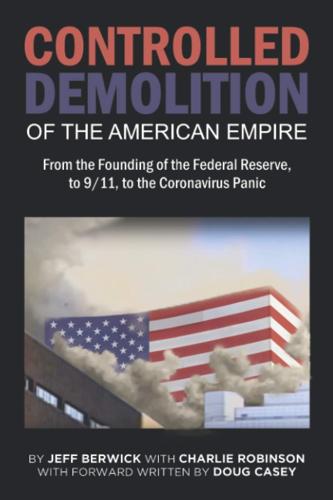
The Controlled Demolition of the American Empire
by
Jeff Berwick
and
Charlie Robinson
Published 14 Apr 2020
There is a cash-flow figure associated with each prisoner, and Wall Street loves statistics showing guaranteed money flowing in for years to come. These figures then are used to justify higher stock prices for these companies in the private prison industry. If Gold’s Gym could guarantee Wall Street that a huge chunk of their members would stay members for the next two decades, their stock price would spike too. The rise of “Mandatory Minimums” in sentencing happened at the same time that private prisons were coming online. That is not accidental. The people developing private prisons got together with their high power law firm partners that helped them to develop their business in the first place, and actively lobbied their political friends to create a way to guarantee a huge batch of new customers, not just for their current facilities, but for future facilities that have not even been built yet.
…
Making long prison sentences mandatory removes discretion from the judge’s hands and forces them to impose unusually harsh incarceration terms on convicts that might have had a chance of receiving less time. It removes a great deal of uncertainty as to how many beds might be filled in the future, and it shows potential investors why they should invest in them so that they can build even more prisons. Mandatory minimums can make their stock price jump without even adding additional capacity, just because of the reduction of uncertainty. An increase in stock value also allows the private prison company to have even more money to use to game the system further by expanding out and influencing politicians in other states as well.
…
This kind of sentence was almost unheard of before the War on Drugs policy was instituted.118 The intentional hollowing out of the American inner-city began in the 1960s when Nixon, fearful of not getting reelected, instituted a major crackdown on heroin to clear black voters out of the voting booths for good by making them convicted felons. The targeted assault was kicked into high gear through Reagan’s insulting “War on Drugs” that placed the Government’s large thumb on the scale of democracy. It was taken to new and horrifying levels under Clinton and the Mandatory Minimum laws that disproportionately targeted the inner cities and then pushed into something from a Philip K. Dick novel as Trump enforced Obama’s illegal immigrant laws by rounding up, then splitting up families and warehousing them like they were jars of tomato sauce into Walmarts that have been recently converted into private concentration camps in anticipation of these events unfolding.
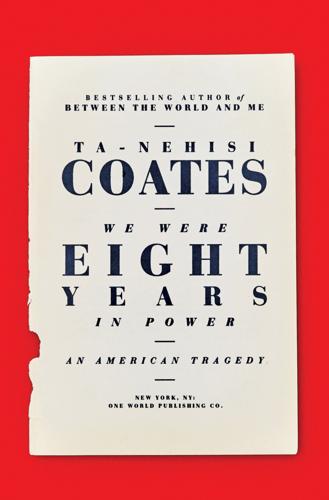
We Were Eight Years in Power: An American Tragedy
by
Ta-Nehisi Coates
Published 2 Oct 2017
Then, perhaps talking to himself, he added, “Yep, this hits it right on the nose, the thing about this whole teacher—it’s all about law and order and the damn Negro–Puerto Rican groups out there.” As incarceration rates rose and prison terms became longer, the idea of rehabilitation was mostly abandoned in favor of incapacitation. Mandatory minimums—sentences that set a minimum length of punishment for the convicted—were a bipartisan achievement of the 1980s backed not just by conservatives such as Strom Thurmond but by liberals such as Ted Kennedy. Conservatives believed mandatory sentencing would prevent judges from exercising too much leniency; liberals believed it would prevent racism from infecting the bench.
…
As the historian Naomi Murakawa has shown in her book The First Civil Right: How Liberals Built Prison America, many Democrats knew exactly what they were doing—playing on fear for political gain—and did it anyway. Voting on the Anti–Drug Abuse Act of 1986, Nick Rahall II, a congressman from West Virginia, admitted that he had reservations about mandatory minimums but asked, “How can you get caught voting against them?” Congresswoman Patricia Schroeder of Colorado accused her colleagues of using the 1986 bill to score points before an election. In the end, she voted for it. “Right now, you could put an amendment through to hang, draw, and quarter,” said Claude Pepper, a historically liberal congressman from Florida, referring to the same law.
…
From the Democratic Socialist Bernie Sanders (“To my mind, it makes eminently more sense to invest in jobs and education, rather than jails and incarceration”) to mainstream progressives like Hillary Clinton (“Without the mass incarceration that we currently practice, millions fewer people would be living in poverty”) to right-wing Tea Party candidates like Ted Cruz (“Harsh mandatory minimum sentences for nonviolent drug crimes have contributed to prison overpopulation and are both unfair and ineffective”), there is now broad agreement that the sprawling carceral state must be dismantled. Longtime criminal-justice-reform activists who struggled through the tough-on-crime ’90s are heartened to see the likes of Koch Industries, a conglomerate owned by patrons of the libertarian right, teaming up with the Center for American Progress, a liberal think tank, in service of decarceration.

The Vanishing Middle Class: Prejudice and Power in a Dual Economy
by
Peter Temin
Published 17 Mar 2017
They are the majority of inmates, and our judicial system keeps low-wage whites down as well as operating as a new form of Jim Crow.13 Three-quarters of today’s imprisoned drug offenders did not have any serious history of violence before their drug conviction. Half of them are in very low criminal history categories, but the average expected time served for drug offenses is close to ten years. Mandatory minimum jail stays markedly increase the length of sentences. And almost all drug offenders are held in state prisons, making it hard to reduce our bloated prison population by, say, cutting drug jail sentences in half. A bill to reduce mandatory minimum sentences with bipartisan backing failed in the Senate as 2016 election posturing got in the way.14 The United States now has far more of its population in jail than any other industrial country, and prisons cost a lot of money at a time when government resources are tight.
…
The Corrections Corporation of America has spent over $20 million on political campaigns and lobbying and is continuing these efforts today. They also lobby through the American Legislative Exchange Council (ALEC), the conservative, nonprofit organization founded and funded by the Koch brothers in 1973 and described in chapter 2. ALEC promoted model bills on mandatory minimum sentencing and three-strikes legislation that helped promote the growth of mass incarceration in the 1990s. The influence of the private prison firms and ALEC impedes efforts to reduce American incarceration. Lobbyists from the private prison industry actively campaigned for three-strikes laws.22 ALEC is one of the ways that the Koch brothers and their supporters affect political outcomes.
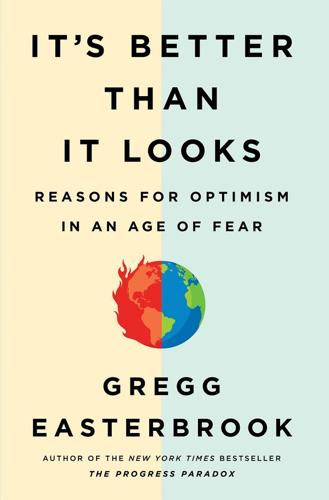
It's Better Than It Looks: Reasons for Optimism in an Age of Fear
by
Gregg Easterbrook
Published 20 Feb 2018
New York and other cities switched policing emphasis to enforcement of concealed-weapon restrictions, so street punks hesitate to carry. Following a ballot initiative, California, the largest state, made criminal sentences much harsher, adding a three-strikes standard; other states matched. Congress enacted mandatory-minimum laws; many states matched, and violent crimes generally are under state jurisdiction. A series of Supreme Court decisions ended most suppression of evidence: today prosecutors convict, or attain guilty pleas from, more than 90 percent of criminal defendants. President Bill Clinton backed 1994 legislation that expanded federal authority against lawbreaking, funded additional police, increased sentences, and applied capital punishment to more offenses.
…
ABOUT THE SAME TIME THE ubiquitous cell camera created a sense that police misbehavior was rampant, many, including federal judges appointed by Republican presidents, began to say that US sentencing and incarceration standards had become excessive: especially, were harsh on the sort of street drug crimes committed by the disenfranchised while forgiving of the sort of white-collar crimes committed by the privileged. In 2012, another California referendum softened the state’s three-strikes law: voters rightly concluded that punishment had gone too far. In 2015, the Supreme Court ruled some aspects of mandatory-minimum sentencing unconstitutional. Conservative thinkers and politicians, including Bruce Rauner, the conservative Republican governor of Illinois, began to advocate shorter sentences; an end to the assumption—sometimes, the statutory requirement—that released felons not be hired; and relaxed parole and bail standards.
…
A poor or working-class person who can’t post bail may lose his or her job, or family, before the system gets around to saying the words “not guilty,” small consolation at that point. Legislatures have been moving, haltingly, in the direction of more discretion for judges, owing to rising awareness that in a mandatory-minimum situation, how the prosecutor charges the suspect is more important than how the jury weighs the evidence. Gilad Edelman noted in 2017, “ While legislatures write the laws and cops make the arrests, it’s prosecutors who decide what a defendant will be charged with,” and the charge, which in many cases the judge or jury cannot alter, determines the sentence.

Doing Time Like a Spy
by
John Kiriakou
Published 11 May 2017
It turned out that several of the photos Erik had received in a trade were of girls who were sixteen years old. The photos had been electronically tagged by the FBI, and the trail led to Erik. In court, the judge recommended to both sides that, rather than being incarcerated, Erik be sent to a psychiatric facility for intensive therapy. The prosecution objected and demanded that Erik serve the mandatory minimum of five years. The judge’s hands were tied, and Erik arrived at Loretto in April 2013. I don’t know what made me feel sorry for Erik. I guess I just never considered him to be a chomo, all of whom I loathed. But he was so out of place in prison that it was pathetic. And at five foot eight and 130 pounds, he had no way to defend himself.
…
He became the de facto physician for the housing unit, whether the cops liked it or not. Paulie Apostolopoulos was Mark’s roommate and was my only Greek-American compatriot in prison. There was no reason for Paulie to be in prison. He should have been home with his five daughters. But that’s the curse of mandatory minimum drug sentences in our country. There were many more weirdos, lunatics, and freaks than there were good guys. That’s what made prison such a challenging experience. And it was against these dangerous characters that I had to use my CIA training. There were two people, especially, whom I loathed from the minute I met them.
…
I take the Constitution very seriously, and I’ll work to help those inside and outside prison to preserve their Constitutional rights, especially that of freedom of speech. In the meantime, I’m getting on with my life. I’ve become something of a national voice on prison reform issues. I’ve appeared on CNN, Fox News, MSNBC, Democracy Now, and elsewhere to talk about the prison system, mandatory minimum sentencing, and my own experience. I have a weekly column at Reader Supported News. I’m thrilled that people actually listen. On the day of my arrest, my brother Emanuel told me, “I know you can’t see this right now, but this is going to turn out to be the best thing that ever happened to you.”
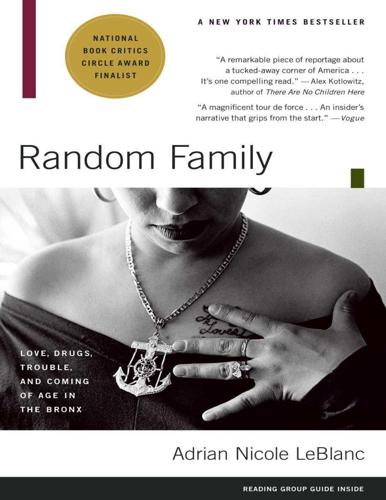
Random Family: Love, Drugs, Trouble, and Coming of Age in the Bro
by
LeBlanc, Adrian Nicole
Published 23 Oct 2012
Had Jessica gone to trial, she would have faced a twenty-year mandatory minimum term. Instead, she pled guilty to one count of participating in a narcotics conspiracy. The judge asked Jessica if she had anything she wanted to say before he imposed his sentence. Jessica stood. She spoke softly. “Yes, Your Honor. I would just like to say that I’m sorry for the crime that I’ve committed, and all I hope for is to return to my family and to my mother.” Despite appearances, Jessica’s sentence was not determined by the judge; federal mandatory minimums pretty much rendered judicial discretion moot. Drug quantity served as the main determinant of prison time.
…
I feel that this case is a case that really does not call for the mandatory minimum that exists here. I think you have to be punished and you should be punished, but I think a ten-year sentence in this case is unusually harsh, and I do not like imposing it, but I have an oath of office that I have to follow.” The proof of Jessica’s actual involvement in the Obsession organization was limited: two entries in 10-4’s ledger from her few days of working at the mill, and the brief message she’d passed on to George’s supplier, recorded on the wiretap. However, to reduce the mandatory minimum term, Jessica would have had to cooperate, and she had refused.
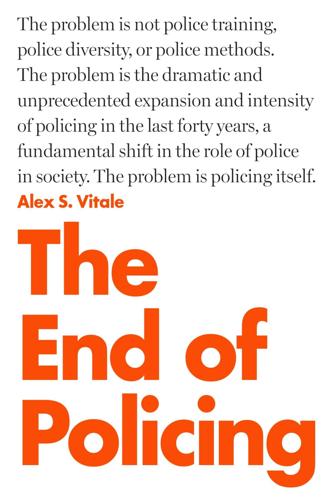
The End of Policing
by
Alex S. Vitale
Published 9 Oct 2017
The School-to-Prison Pipeline Finally, these forces have meshed with the overall trend toward harsher punishments driving the rise of mass incarceration more generally. Politicians in the 1990s had already embraced the idea that criminality was a deeply embedded moral failing that was largely impervious to reform. The only appropriate response, they argued, was long-term incarceration, as seen in the rise of “three strikes” laws and other mandatory minimum sentencing schemes. In this political environment, every public safety threat was immediately turned into another opportunity to roll out more punishment and control. President Bill Clinton was more than happy to oblige. In 1994 he introduced the Gun-Free Schools Act, which ushered in “zero tolerance” school discipline policies.
…
Furthermore, most people caught up in the drug war are low-level offenders arrested for possession in street-level “buy-and-bust” operations (pursuant to a search of sometimes questionable legality), and are targeted as part of a growing system of paid informants, or are implicated by others facing draconian mandatory minimum sentences.38 Our prisons are not filled with drug kingpins, nor are they filled with saints. Mostly they are filled with people enmeshed in a massive black market that provides jobs and incomes for millions who have little access to the formal economy. Because it is an underground market, it is at times violent.

Listen, Liberal: Or, What Ever Happened to the Party of the People?
by
Thomas Frank
Published 15 Mar 2016
In the precise words of Christopher Hitchens, Rector was a “human sacrifice” for Clinton’s presidential ambition.17 The reasoning that led Clinton to turn the Rector execution into a ritual appeasement of the electoral gods brought him, in 1994, to call for and then sign his name to the most sweeping police-state bill that modern-day America has seen. Among other things, the measure provided for the construction of countless new prisons, it established over a hundred new mandatory minimum sentences, it allowed prosecutors to charge thirteen-year-olds as adults in some cases, and it coerced the states into minimizing parole. It also increased the number of federal death penalties from three to sixty, including some for nonlethal offenses—and this from a political party that in 1972 had called for the abolition of capital punishment in its national platform.
…
“Upping the ante”: The presidential aides in question were Bruce Reed and Jose Cerda III. They and Biden are quoted in Naomi Murakawa, The First Civil Right: How Liberals Built Prison America (Oxford, 2014, Kindle edition). Murakawa also points out that the 1994 crime bill established 116 new mandatory minimum sentences, considerably more than were established in the Reagan and Bush I administrations put together. 19. Lieberman quoted in Mark Pazniokas, “Tough Stands on Crime May Ignore Reality,” Hartford Courant, October 20, 1994. 20. The crime bill of 1994 authorized the U.S. Sentencing Commission to relitigate the matter of the crack vs. powder cocaine disparity.
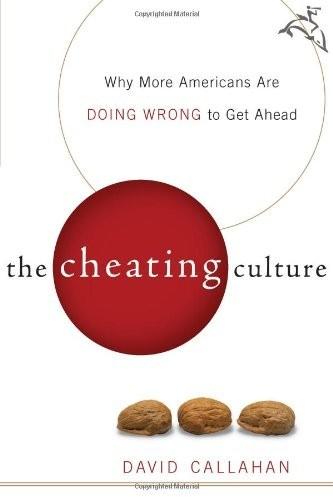
The Cheating Culture: Why More Americans Are Doing Wrong to Get Ahead
by
David Callahan
Published 1 Jan 2004
Nor did the company bother sounding contrite about actions that defrauded taxpayers of tens of millions of dollars. "We disagree with the government on this, but to put it behind us, we are agreeing on a settlement today," said a company spokesperson.26 The rare white-collar criminals who actually did face a judge were invariably treated lightly. The zeal in the '80s and '90s to impose mandatory minimums and "three-strikes policies" never extended to white-collar crimes. For example, the executives at the agricultural giant Archer Daniels Midland who orchestrated a global price-fixing conspiracy that cost consumers $500 million faced maximum prison terms of only three years when they were sentenced in 1999.
…
Though he had specifically informed bank tellers that he was unarmed, Coleman Nee's crime earned him a fifty-seven-month sentence.27 White-collar criminals have also benefited from the wide disparities in sentencing across the nation—an advantage not granted to drug offenders facing uniform mandatory minimums. States such as Wisconsin, which are home to fewer firms offering financial services and other complex transactions vulnerable to fraud, tend to mandate jail time in as much as 85 percent of the cases. In New Jersey, where prosecutors must make deals in order to keep caseloads at manageable levels, white-collar criminals got prison time in only 26 percent of cases.28 The coddling of white-collar criminals extends into their prison terms.
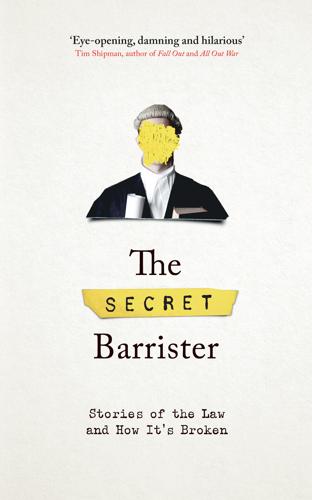
The Secret Barrister: Stories of the Law and How It's Broken
by
Secret Barrister
Published 1 Jul 2018
There are mandatory life sentences, automatic life sentences (not the same thing), discretionary life sentences, extended sentences of imprisonment (various iterations of which each carry their own special complex provisions about prisoner release dates), special sentences for ‘offenders of particular concern’, hospital orders (with or without restrictions) and mandatory minimum custodial sentences, to name a few. And that’s before one considers the ancillary orders – some discretionary, some mandatory – that attach to certain offences: driving disqualifications, penalty points, endorsement of driving licence, extended driving retests, restraining orders, Sexual Harm Prevention Orders, Serious Crime Prevention Orders, compensation orders, ancillary financial orders, confiscation orders (under no fewer than three different statutory regimes), deprivation orders, forfeiture orders, dog destruction orders, criminal behaviour orders, company director disqualification orders, recommendations for deportation, credit for time spent on bail on a qualifying curfew, mandatory statutory surcharges (of a dizzying array of ever-changing figures depending on the sentence and the date of the offence) and costs.13 And this is just adult offenders – youth sentencing boasts its own panoply of (arguably even more confusing) overlapping provisions.
…
Parliament had no truck with the proposition that focusing on intensive community rehabilitation and addressing the social attitudes that normalize knife-carrying in certain subcultures might reduce crime and protect the public, and could be combined with a non-custodial punishment that satisfied our need for vengeance. Instead, they looked at the list, turned (a) up to eleven and to tabloid joy introduced mandatory minimum sentences of six months’ imprisonment for repeat knife carriers.24 It didn’t matter that statistics demonstrate that short prison sentences under six months are ineffective in preventing reoffending;25 it didn’t matter that we would be introducing young people, who may not be otherwise criminally sophisticated, into an environment with hardened criminals who habitually carry weapons far more dangerous than knives.
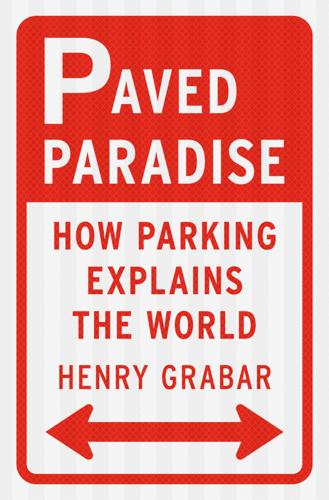
Paved Paradise: How Parking Explains the World
by
Henry Grabar
Published 8 May 2023
“This works against many other policies a city creates to encourage sustainable development, promote active transportation, and serve low-income families. This discussion reminds me of the 1970s Joni Mitchell song Big Yellow Taxi in which she famously sings, ‘They paved paradise and put up a parking lot.’ ” Regaining a piece of paradise, he wrote, demanded that cities and counties eliminate mandatory minimums, use data and pricing to manage supply, and create policies to reduce driving demand. The ITE’s book ought to be guidance, not law. But the engineers’ concession meant little on the ground, said Foster-McKenna. “You go to your average yokel planning department, they’re talking about cars.
…
In Austin, Texas, Habitat for Humanity has snuck out of sky-high parking requirements by adding an extra bedroom without a closet to a two-bedroom apartment and calling it a “two bedroom plus.” No closet, no official bedroom, no parking space required. Not that the child who sleeps there will care. * * * — Beginning in 2017, mandatory minimums were abolished entirely in Hartford, Buffalo, and San Francisco. Developers still built parking, of course. But in the first study of thirty-six projects undertaken since the Buffalo reform, half of new major developments came with fewer spaces than had been required. In Seattle, developers taking advantage of reduced parking minimums built 40 percent less parking than would have been required.
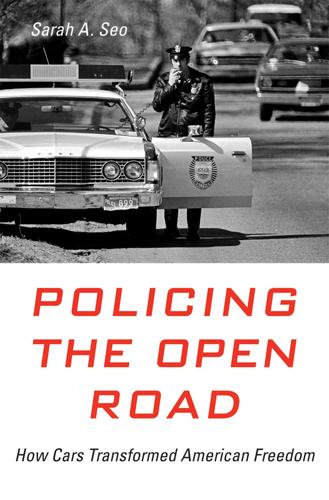
Policing the Open Road
by
Sarah A. Seo
Although American society had long criminalized heroin and marijuana, the various iterations of its drug wars treated narcotics as a health problem as much as a crime problem until the early 1970s. One turning point was New York’s Rockefeller drug laws, enacted in 1973 and named after the state’s governor, who had presidential ambitions. The laws established a mandatory minimum of fifteen years to life for possession of four ounces of prohibited substances—the same sentence for second-degree murder. Systematized enforcement and severe penalties gained ground in the 1980s and have ramped up since then. But back in the late 1960s, Robinson’s and Gustafson’s drug busts were more incidental to the ubiquity of traffic stops, a cop’s superhuman memory, and a patroller’s routine watch for “vagrant” teenagers.18 The opinion in Robinson, which stated the holding for Gustafson as well, concluded that incident to a lawful arrest, an officer could search any “containers” found inside the pockets of an arrestee’s clothes.
…
Over the next decade, the award-winning and best-selling author on the subject of officer safety refined the methods that would go into his third textbook, Tactics for Criminal Patrol: Vehicle Stops, Drug Discovery and Officer Survival, which he used to train local police throughout the country. At the same time that Remsberg was discovering the full potential of routine patrol, the drug war took a sharp, punitive turn under President Reagan’s direction. In 1986, Congress passed the Anti–Drug Abuse Act, which established mandatory minimum sentences for dealers; it updated the act two years later to extend the same harsh consequences to users as well. Also in 1986, the US Drug Enforcement Administration (DEA) launched Operation Pipeline, which relied on state highway patrols, rather than special forces, to intercept trafficked drugs.
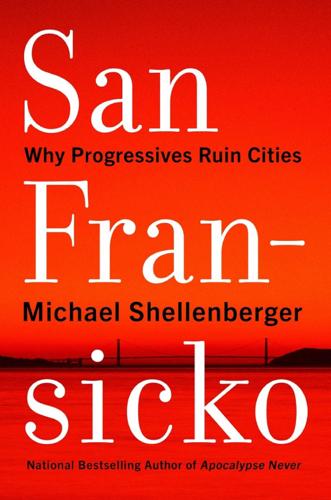
San Fransicko: Why Progressives Ruin Cities
by
Michael Shellenberger
Published 11 Oct 2021
For example, the number of people imprisoned for less serious types of theft rose 565 percent between 1980 and 1990.47 In the 1990s, the California legislature and voters enacted other tough-on-crime measures. They included expanded application of the death penalty,48 the use of hearsay evidence in preliminary hearings in cases of rape,49 and, most notoriously, the “three strikes you’re out” law, which imposed a mandatory minimum sentence of twenty-five years to life for three-time felony offenders.50 The year 2000 marked the transition from tough-on-crime policies to softer policies. Voters in 2000 passed Proposition 21, which I fought and failed to defeat, which expanded the circumstances whereby juveniles can be tried as adults.51 But California voters also passed a ballot initiative, Proposition 36, created by Ethan Nadelmann and funded by George Soros, which permitted offenders convicted for the first or second time for a nonviolent, low-level drug possession offense to receive probation and community-based drug treatment instead of jail or prison.
…
Gross, Maurice Possley, and Klara Stephens, “Race and Wrongful Convictions in the United States,” National Registry of Exonerations, Newkirk Center for Science and Society, March 7, 2017, http://www.law.umich.edu/special/exoneration/Documents/Race_and_Wrongful_Convictions.pdf; William H. Pryor et al., “Mandatory Minimum Penalties for Firearms Offenses in the Federal Criminal Justice System,” United States Sentencing Commission, March 2018, www.ussc.gov; “A Living Death: Life Without Parole for Nonviolent Offenses,” ACLU, November 2013, www.laaclu.org. 19. Emily Owens, Erin M. Kerrison, and Bernardo Santos Da Silveira, “Examining Racial Disparities in Criminal Case Outcomes Among Indigent Defendants in San Francisco,” Quattrone Center for the Fair Administration of Justice, University of Pennsylvania Law School, May 2017, https://www.law.upenn.edu/live/files/6793-examining-racial-disparities-may-2017-full; Mike Dorning, “Plea Bargains Favor Whites in Death Penalty Cases, Study Says,” Washington Post, July 26, 2000, www.washingtonpost.com; Jonah B.
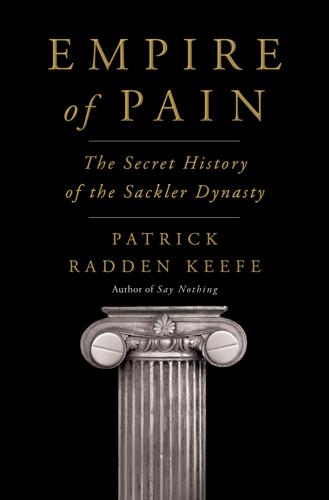
Empire of Pain: The Secret History of the Sackler Dynasty
by
Patrick Radden Keefe
Published 12 Apr 2021
In the very prison: David Bursten (Indiana Department of Public Correction) to The New Yorker, email. the prison’s own statistics: Ibid. African Americans had been spared: “A ‘Rare Case Where Racial Biases’ Protected African-Americans,” New York Times, Dec. 6, 2019. reinstating a mandatory minimum: “Pence Reinstates Mandatory Minimum Prison Terms for Some Drug Crimes,” Times of Northwest Indiana, March 21, 2016. 82 percent of those charged: “Quick Facts: Heroin Trafficking Offenses,” U.S. Sentencing Commission. she would state vaguely: “Madeleine Sackler’s Films Praised, but She Faces Scrutiny over Opioid Wealth,” Guardian, May 2, 2018.
…
It appeared to be a rare instance in which systemic racism could be said to have protected the community. But people of color were disproportionately affected by the war on drugs. Purdue executives might have evaded jail time for their role in a scheme that generated billions of dollars for Madeleine’s family, but in 2016, Indiana’s governor, Mike Pence, signed a law reinstating a mandatory minimum sentence for any street-level dealer who was caught selling heroin and had a prior conviction: ten years. Nationwide, 82 percent of those charged with heroin trafficking were Black or Latino. It is impossible to speak honestly about mass incarceration without also speaking of the war on drugs.

The Science of Fear: How the Culture of Fear Manipulates Your Brain
by
Daniel Gardner
Published 23 Jun 2009
He was right, and as president he stuck to a tough line, signing into law a long list of punitive bills and presiding over such spectacular growth in the prison population that the United States passed Russia as the nation with the world’s highest incarceration rate. He may have regretted it, though. Mandatory minimum sentences are “unconscionable” and “we really need an examination of our entire prison policy,” Clinton told a reporter from Rolling Stone magazine—two weeks before he left office. The basic technique of the politics of crime is little different than that used by security companies selling home alarms or pharmaceutical companies peddling cholesterol pills: Raise fear in the public, or amplify existing fears, then offer to protect the public against that which they fear.
…
The politicization of crime, and the “get tough” spirit that goes along with it, is far more advanced in the United States than elsewhere, but as British sociologist David Garland and others have shown, it is showing up elsewhere in the Western world. Many of the new American crime policies— three-strikes laws, mandatory minimum sentences, supermax prisons, sex offender registries—have been introduced or discussed everywhere from Australia to the Netherlands. In the French presidential election of 2007, the Socialist candidate tried to diminish the appeal of Nicolas Sarkozy’s tough talk on law and order by promising to build boot camps for young punks.

Competition Overdose: How Free Market Mythology Transformed Us From Citizen Kings to Market Servants
by
Maurice E. Stucke
and
Ariel Ezrachi
Published 14 May 2020
Privatization and Prisons: Making Crime Pay It is easy, and appropriate, to be critical of the American prison system as it has operated under federal and state auspices. Privatization of the prison system is actually just the latest iteration of a view of the prison system as a potential profit center.3 During the 1980s, the prison system was faced with severe overcrowding as tough-on-crime legislation and mandatory minimum-sentencing guidelines sent far more offenders to prison, and kept them there for longer, than the system could handle. The result was a prison system in crisis. Thus, the siren song of the privatizers—Whatever the government can do, we can do better—proved very alluring. And in 1983, Corrections Corporation of America came on the scene to offer the country its first private prison—a motel in Texas that was remodeled to hold immigration detainees.
…
The First Step Act, the 2018 legislation passed by Congress and signed by President Trump, is the outcome of a bipartisan effort to take some of these ideas into account in reforming the federal criminal justice system. The act expands early-release programs and modifies sentencing laws, including mandatory minimum sentences for nonviolent drug offenders. It also expands job training and other programming aimed at reducing recidivism rates. Nonetheless, CoreCivic’s total revenue for its prisons is increasing—by 2.8 percent in its third quarter of 2018 (compared to the third quarter of 2017)—from existing and new contracts, including the US Immigration and Customs Enforcement, where locking up nonviolent undocumented immigrants is a profitable growth segment.11 Its rival GEO in 2018 likewise was “marketing approximately 4,700 vacant beds . . . to potential customers.”12 Privatization takes the low-cost “profitable” inmates and offloads more expensive inmates to the state The good news for private prisons is that the United States has both the highest reported rate of incarceration, by far, in the world—655 inmates per 100,000 people, versus 142 for every 100,000 in England and Wales, 102 per 100,000 in France, and 77 per 100,000 in Germany13—and the longest average length of detention—63 months versus 4 months in Canada, 12 months in Germany, and 36 months in Australia.14 To continue growing revenues, for-profit prisons need even more people locked up for longer periods—including undocumented immigrants, low-level drug offenders, deadbeat parents who don’t pay child support, and other nonviolent criminals.

Futureproof: 9 Rules for Humans in the Age of Automation
by
Kevin Roose
Published 9 Mar 2021
But we do know that when opaque managerial algorithms are implemented without enough human oversight, trouble often follows. Workers at Instacart and other on-demand delivery services have gone on coordinated “strikes” to protest controversial policies, like a setting in Instacart’s app that applied customer tips toward mandatory minimum payments, rather than putting them on top of the minimums. Full-time YouTube creators—perhaps the most directly machine-managed humans on earth—have made a sport of dissecting the platform’s all-important recommendations algorithm and complaining about its effects on their channels. A 2019 study of Uber drivers found that many of them felt frustrated and dehumanized by their algorithmic management structure, in which everything from their wages to their performance ratings was determined by opaque, inscrutable machines.
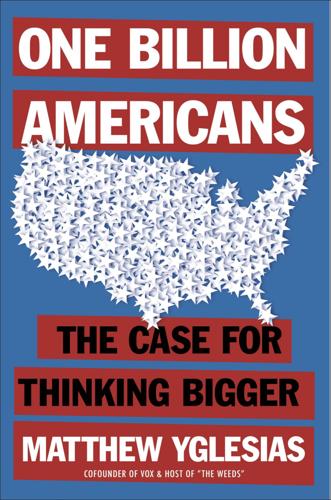
One Billion Americans: The Case for Thinking Bigger
by
Matthew Yglesias
Published 14 Sep 2020
The crucial point is that even though “upzoning” the RF-1 portion of the city to allow for triplexes and quadplexes would be a good idea, the practical impact would be limited as long as the building forms can’t change. This is one reason why something like Houston’s infamous lack of zoning ends up meaning less in practice than you might think. The city still has mandatory minimum parking requirements, building setback rules, and other restrictions on how developed land may be used. These rules—and the potential to change them—make a real difference even in a sprawling, car-oriented city whose metro area is generally pretty affordable. Up until 1999, for example, the city required houses to have minimum lots of 5,000 square feet.
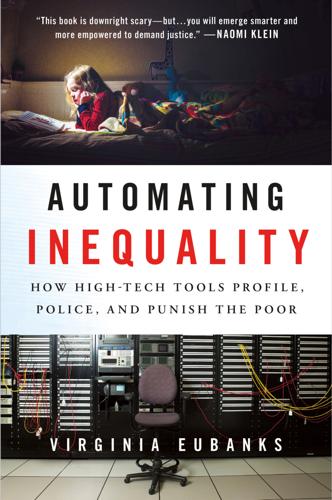
Automating Inequality
by
Virginia Eubanks
After all, a computer applies the rules to each case consistently and without prejudice. But historically, the removal of human discretion and the creation of inflexible rules in public services only compound racially disparate harms. For example, in the 1980s and 1990s Congress and many state legislatures enacted a series of “Tough on Crime” laws that established mandatory minimum sentences for many categories of crime and removed a great deal of discretion from judges. Ironically, the changes were a result of organizing both by conservative law-and-order types and by some progressive civil rights activists who saw the bias in judicial discretion as creating racially disparate outcomes in sentencing.

The botany of desire: a plant's-eye view of the world
by
Michael Pollan
Published 27 May 2002
In 1998 the federal government threatened to revoke the license of California doctors who exercised their First Amendment right to talk to patients about the medical benefits of marijuana. Also that year, Congress ordered the District of Columbia not to count the votes of its citizens in a referendum on medical marijuana. Arguably, the war against cannabis has also eroded the Sixth Amendment right to a jury trial (since drastic mandatory minimum sentences force most marijuana defendants to accept plea bargains) as well as the presumption of innocence (since asset forfeiture allows the government to seize assets without proving guilt). *Remove the twenty million or so Americans who use marijuana, and we are left with a “drug abuse epidemic” involving roughly two million regular heroin and cocaine users—a public health problem, to be sure, but serious enough to justify spending $20 billion a year (or modifying the Bill of Rights)?
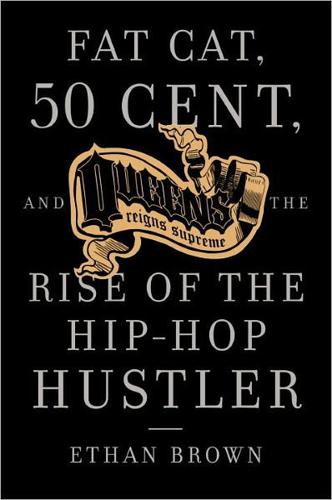
Queens Reigns Supreme: Fat Cat, 50 Cent, and the Rise of the Hip Hop Hustler
by
Ethan Brown
Published 22 Nov 2005
Cooperating with law enforcement in the prosecution of Pappy Mason was understandable, because the senseless murder of Edward Byrne would forever sully Fat Cat’s legacy, especially now that Arjune’s home had been turned into a memorial to the fallen cop. George Bush campaigned in the fall of 1988 with Byrne’s badge in his pocket as a symbol of his “get tough” approach to the war on drugs, and by the end of the year, Congress passed the Anti-Drug Abuse Act of 1988, which stipulated a mandatory minimum sentence of five years for a first-time offender’s possession of more than five grams of crack cocaine and applied the death penalty provision to drug dealers. During the signing of the bill at the White House on November 18, President Reagan stood side-by-side with Byrne’s parents, and he hailed the fallen cop as a national hero.
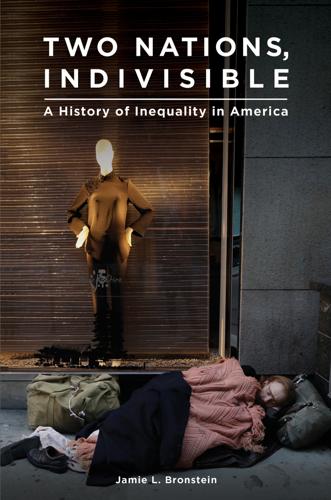
Two Nations, Indivisible: A History of Inequality in America: A History of Inequality in America
by
Jamie Bronstein
Published 29 Oct 2016
As political scientist Larry Bartels explains, “tying the income subsidy to wages encourages work and sidesteps the association of traditional welfare programs with the ‘undeserving poor’ … this aspect of the program is reinforced by the designation of EITC as a ‘tax credit,’ despite the fact that most recipients have no income tax liability to offset.”88 Calling such transfers “earned income” credits makes them politically acceptable, in contrast to welfare. Addressing American inequality also means addressing inequities in the legal system. Doing away with mandatory minimum sentencing might start to address incarceration rates and the long-term inequality that they bring for young male members of minority groups. Ron Haskins of the Brookings Institution also recommends a combination of programs to reduce teen birth rates, subsidize and facilitate marriage for poor minority couples, and help released prisoners find gainful employment.89 Communication Studies professor Martin Carcasson suggests that the model for future beneficial change lies on the micro scale.
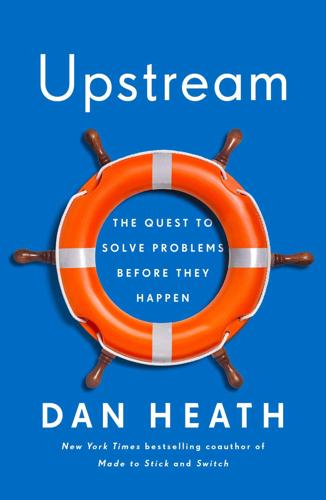
Upstream: The Quest to Solve Problems Before They Happen
by
Dan Heath
Published 3 Mar 2020
build an evidence base that policymakers could rely on: Background on the founding and early days of the Crime Lab from multiple interviews with Jens Ludwig and Roseanna Ander in 2018 and 2019, and an interview with Harold Pollack in August 2018. Also: see University of Chicago Urban Labs, “Our Approach,” https://urbanlabs.uchicago.edu/about. pored over medical examiner reports: Ibid. Also: see University of Chicago Crime Lab, “Testimony of Harold Pollack, PhD, March 13, 2013,” https://blogs.chicagotribune.com/files/mandatory-minimums-testimony20130313.pdf. a kid… had stolen a bike: Interview with Roseanna Ander, March 2018. “My fundamental equation”: Interview with Harold Pollack, August 2018. better known as Tony D: Rob Waters, “A Conversation with Tony D: How ‘Becoming a Man’ Got to the White House,” Forbes, March 9, 2016, https://www.forbes.com/sites/robwaters/2016/03/09/a-conversation-with-tony-d-how-becoming-a-man-got-to-the-white-house/#5c0f2e81666b.

AI Superpowers: China, Silicon Valley, and the New World Order
by
Kai-Fu Lee
Published 14 Sep 2018
Frictionless and hooked into mobile, the apps soon turned into tools for “tipping” the creators of online articles and videos. Micro-payments of as little as fifteen cents flourished. The companies also decided not to charge commissions on the vast majority of transfers, meaning people accepted mobile payments for all transactions—none of the mandatory minimum purchases or fifty-cent fees charged by U.S. retailers on small purchases with credit cards. Adoption of mobile payments happened at lightning speed. The two companies began experimenting with payment-by-scan in 2014 and deployed at scale in 2015. By the end of 2016, it was hard to find a shop in a major city that did not accept mobile payments.
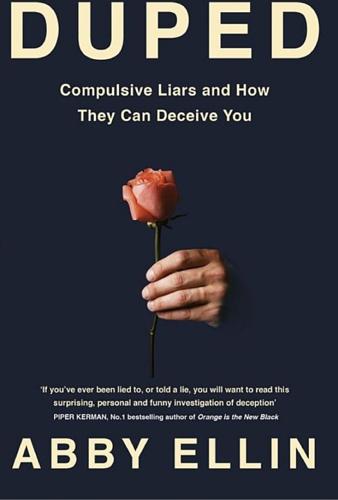
Duped: Double Lives, False Identities, and the Con Man I Almost Married
by
Abby Ellin
Published 15 Jan 2019
He most certainly had not helped the Commander out. “He stole my identity, that motherfucker!” The Commander was arrested and sentenced in 2012, but the navy didn’t discharge him until late 2013. He voluntarily surrendered his medical license in August 2014. After plea-bargaining, he was sentenced to two years and one day, the mandatory minimum, in a minimum security prison, and ultimately he served twenty-one months. I got periodic updates from the Department of Justice; he told his son that Obama was going to give him a presidential pardon. He didn’t. “YOU’RE LUCKY,” FRIENDS said when the Commander was safely ensconced in a West Virginia prison.
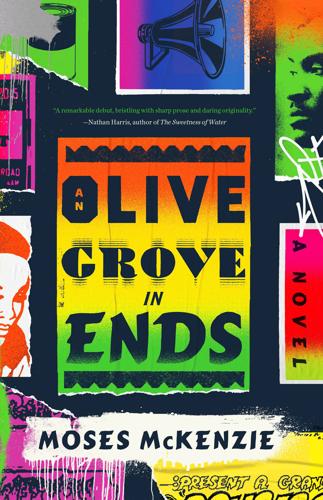
An Olive Grove in Ends
by
Moses McKenzie
Published 31 May 2022
It was one of those Lexuses New Yorkers used to rap about, the kind that drew attention, even from people who didn’t know anything about cars. Uncle Calvin unloaded the gun and stored it in the glovebox. He put the bullets beneath the handbrake. They wore gloves and black clothes. If they were pulled over Uncle Calvin would face the mandatory minimum five years for possession, but because the gun wasn’t loaded they wouldn’t be able to prove criminal use or even that Bunny knew there was a weapon in the whip. Even if they were red, they were Black, and the car was expensive, so of course they were pulled over and of course the police found the weapon.
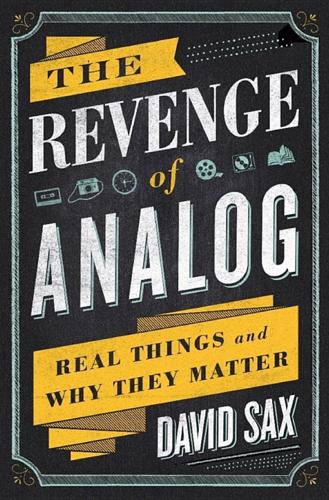
The Revenge of Analog: Real Things and Why They Matter
by
David Sax
Published 8 Nov 2016
All of this would create more jobs, more salaries, and put more money into the hands of Detroiters. The city may have been bankrupt, plagued by crime, inequality, poverty, and unemployment, but in this little analog corner of Detroit, business was booming. 8 The Revenge of School There are few easy solutions to digital’s disruption of the jobs market. Some have proposed a mandatory minimum income, while others talk about the need for greater government investment in infrastructure, and subsidies for labor-intensive industries such as energy and manufacturing. The one solution that is almost unanimously accepted is the need for better education. From world leaders to economists, tech-industry gurus, and eager young teachers, creating the future of education is a mission that resonates almost universally.

Economists and the Powerful
by
Norbert Haring
,
Norbert H. Ring
and
Niall Douglas
Published 30 Sep 2012
Therefore there is an inefficient rat race under free contracting in which workers trade off more income for less vacation time in order to keep up with the Joneses. It works for the individual, but if all workers do it, everyone ends up with too little vacation time and no status gained in exchange. A mandatory minimum vacation ends this rat race and makes most workers better off (Layard 2006). Minimum facts about minimum wages In places and occupations where wages are low because low-grade workpeople are being “exploited” by employers, paid less than they are worth, there is no reason to expect that the forcing of the wage rate up to a fair level will cause a [loss of jobs] for it will not pay employers to dispense with their services.
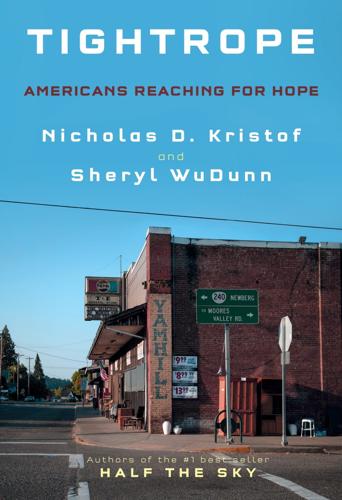
Tightrope: Americans Reaching for Hope
by
Nicholas D. Kristof
and
Sheryl Wudunn
Published 14 Jan 2020
Len Bias’s death rocked the nation, including his fans in Congress. One result was the Anti-Drug Abuse Act of 1986, sometimes called the Len Bias Law, followed by a further tightening with the Anti-Drug Abuse Act of 1988. We traveled around Maryland to learn about the origins of these flawed laws; they had created mandatory minimum sentences of five years for drug crimes, even involving marijuana, but it turns out they reflected more of a cry from the heart than a thoughtful examination of policy proposals. “There was no evaluation of what this law might do,” said Eric E. Sterling, who as a young lawyer working for Congress helped draft both drug laws.

The Alternative: How to Build a Just Economy
by
Nick Romeo
Published 15 Jan 2024
A living wage calculator is not like any other sort of calculator. America’s federal minimum wage of $7.25 an hour remains unchanged, but an increasing number of employers, workers, and consumers regard such low wages as unacceptable. Some three dozen places in America—many in California—already have mandatory minimum wages of at least $15 an hour.7 But a living wage is always relative to two factors: our definition of living and what it costs to afford such a life. Campaigns like the “fight for 15,” while catchy as slogans, risk being outpaced by moral progress, not to mention inflation. Even with very minimal definitions of living, companies would have to pay at least $50 per hour in a growing number of American cities and regions to let workers afford healthy food, safe housing, transportation, health care, and occasional rest and relaxation.
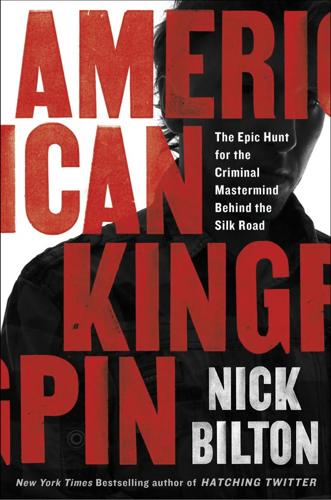
American Kingpin: The Epic Hunt for the Criminal Mastermind Behind the Silk Road
by
Nick Bilton
Published 15 Mar 2017
Advice at the ready. But first VJ wanted to ensure that the creator of the site knew what was at stake here. “Not to be a downer or anything,” he wrote to Ross, but “understand that what we are doing falls under U.S. Drug Kingpin laws, which provides a maximum penalty of death upon conviction . . . the mandatory minimum is life.” Ross knew this better than anyone. But he felt like what he was doing was truly going to change the world and free people. Given that, life in prison, or taking his last breath in an electric chair, was not enough to deter him. “Balls to the wall and all in my friend,” Ross replied, vociferating how unafraid he was of those consequences.

My Glorious Defeats: Hacktivist, Narcissist, Anonymous: A Memoir
by
Barrett Brown
Published 8 Jul 2024
It turned out to be a portion of the customer credit card data he’d used to make donations to the Red Cross and assorted other charities. Now I was facing eleven counts of aggravated identity theft merely for having copied and pasted a link, even though the transcript showed quite clearly that I wasn’t aware at the time that the linked file contained credit card information. Each count carried a mandatory minimum of two years to be served consecutively, meaning I was facing twenty-two years for the link alone. Separately, I faced another ten years for having the document in question on my laptop (although as the government’s own forensics people would later admit, I had never even opened the file). This was in addition to the several decades of prison time I already faced from the previous indictment.
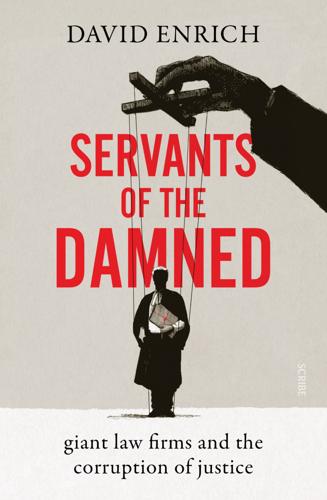
Servants of the Damned: Giant Law Firms and the Corruption of Justice
by
David Enrich
Published 5 Oct 2022
Ayer felt he couldn’t say no to such a senior job. So back he went to Justice in late 1989. It didn’t go well. In February 1990, Ayer wrote a letter to the U.S. Sentencing Commission, which issues guidelines to help courts mete out consistent punishments for criminals. Ayer expressed the Bush administration’s “strong support” for tough mandatory minimum sentences for corporations convicted of crimes like fraud or dumping toxic waste. The letter infuriated the business lobby, which did not help Ayer’s standing in the Republican administration. The bigger problem was that Thornburgh had told Ayer to investigate a rival inside the Justice Department.

Limitarianism: The Case Against Extreme Wealth
by
Ingrid Robeyns
Published 16 Jan 2024
In the past, my interviewee said, you would feel ashamed if you earned a hundred or a thousand times more than the lowest-paid person in your company. Now, that shame is gone. Many experts have recommended limiting pay inequality not just by raising the bottom level of pay but also by lowering the top. We should not just ensure that we have a decent mandatory minimum wage; we should also have a maximum wage. This could be achieved either by introducing legislation or by companies taking the initiative themselves. We can also change social norms concerning executive pay. As the political theorist Fergus Green has shown, moral norms have evolved globally to censure and thus change practices that were once widespread, such as slavery, and they are currently beginning to encompass fossil fuel–related activities.

Mood Machine: The Rise of Spotify and the Costs of the Perfect Playlist
by
Liz Pelly
Published 7 Jan 2025
When an artist is paid from a premium stream, payment is calculated as a percentage of subscription money; when an artist is paid from a free stream, payment is calculated as a percentage from ad revenues. The plan tier also impacts payments in part because, despite the fact that a lesser amount of revenue might go into the royalty pool from users on discounted plans, major labels have negotiated themselves mandatory minimum payouts per user that other rights-holders are unable to command. Once the rights-holder receives its payout from Spotify, it in turn pays artists according to their own deals, which also varyingly contribute to the ultimate size and fairness of the payments that artists receive. Typically when an artist signs with a label, they’ll get a royalty advance—essentially a loan paid back through future royalties, which they use to fund the making of the record—after which the label will also get a percentage of future royalties for the course of an agreement, in exchange for marketing, promotion, and other services.

Black Box Thinking: Why Most People Never Learn From Their Mistakes--But Some Do
by
Matthew Syed
Published 3 Nov 2015
Had the plane dropped another sixty inches it would have connected with the Penta Hotel, and almost certainly destroyed it. To many of the public Stewart’s culpability seemed obvious. Although he had ultimately averted a major disaster, he had disobeyed protocol. His hands had been on the controls when it flew under the mandatory minimum. With this in mind one can see why it would have been tempting to pin the incident on Stewart. The heat was on British Airways and the Civil Aviation Authority, the regulator. By pinning it on the pilot they may have hoped to escape censure for poor oversight and procedure. Eighteen months later, on May 8, 1991, Stewart was convicted at Isleworth Crown Court in southwest London.

Border and Rule: Global Migration, Capitalism, and the Rise of Racist Nationalism
by
Harsha Walia
Published 9 Feb 2021
As explained by the Black Alliance for Just Immigration (BAJI), “Black people are far more likely than any other population to be arrested, convicted and imprisoned in the US criminal enforcement system—the system upon which immigration enforcement increasingly relies.”54 Combined with the overall increase in convictions for drug offenses and the imposition of mandatory minimums, Black migrants are twice as likely to be detained due to a criminal conviction.55 According to BAJI, even though Black immigrants make up 7.2 percent of the total undocumented population, more than 20 percent of all migrants in deportation proceedings due to criminal convictions are Black people.56 Jamila Osman legitimately indicts: “In an era where the word intersectionality has entered the public lexicon, the immigrant rights movement has failed at it.
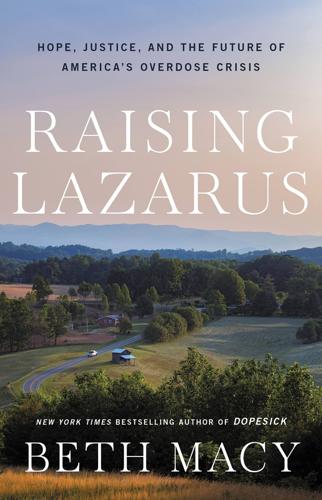
Raising Lazarus: Hope, Justice, and the Future of America’s Overdose Crisis
by
Beth Macy
Published 15 Aug 2022
But it was drug users of color who paid—and are still paying—the stiffest price for the politics of “Just Say No.” When Black college basketball star Len Bias died of a cocaine overdose in 1986, false rumors of a crack frenzy stoked a nationwide panic that sent thousands of low-level drug offenders into prisons and jails. Designed to make politicians look tough on crime, mandatory-minimum sentencing laws were enacted later that year and disproportionately targeted crack cocaine users. Penalties were literally 100 times harsher for crack trafficking than for cocaine when, pharmacologically, the drugs are the same. By 1992, more Black men were in prison on drug-related charges than in college, with the odds of a Black man enrolling in higher education dropping 10 percent.
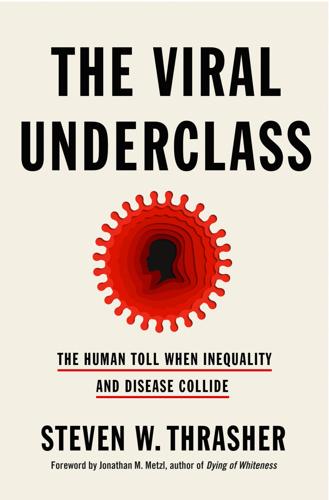
The Viral Underclass: The Human Toll When Inequality and Disease Collide
by
Steven W. Thrasher
Published 1 Aug 2022
Lohmar played a role in why, in 2021, Missouri’s Republican governor and legislature modernized the state’s HIV laws for the first time in thirty years. The updates included prosecuting only people who had “knowingly” exposed others to HIV, not just those who did it “recklessly,” and lowering the mandatory minimum of any sentence from ten years to three. The update does not go far enough, and abolishing such laws entirely would be the best way to mitigate harm to the viral underclass. Still, this modernization creates the likelihood of less time in prison for Missourians prosecuted for transmitting HIV and creates a higher burden of proof for prosecutors.
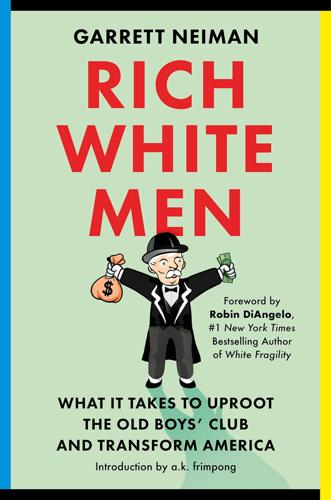
Rich White Men: What It Takes to Uproot the Old Boys' Club and Transform America
by
Garrett Neiman
Published 19 Jun 2023
That’s a disturbing callback to Antebellum American policy, which stated that it was legal for rich white men to rape the people whom they enslaved.10 Recent examples of sanctioned sexual violence illustrate how this particular form of intersectional advantage manifests. In 2015, Stanford undergraduate and Varsity swimmer Brock Turner—a white man raised in a wealthy, 93% white suburb—sexually assaulted an unconscious woman after a college party.11 A year later, Turner was convicted of three charges of felony sexual assault. While many states have mandatory minimums for violent crimes and Brock’s convictions in California carried a potential fourteen-year prison sentence, Santa Clara County Superior Court judge Aaron Persky—himself a wealthy white man, Stanford graduate, and college athlete—sentenced Turner to six months at county jail and three years of probation.

Empty Vessel: The Story of the Global Economy in One Barge
by
Ian Kumekawa
Published 6 May 2025
Howard ushered in a new politics of law and order; at the Conservative Party conference in 1993, he bluntly asserted that “prison works,” and proceeded to outline twenty-seven new anti-crime measures, most of which became law through crime bills enacted over the next two years. Just as in New York, the new legislation was aimed at improving “quality of life”; it targeted ravers, squatters, and travelers, people who lived in ways outside the social norm. It also chipped away at the principle of proportional sentencing, replacing it with mandatory minimum sentences and judicial attention to criminal records.[6] The impact was especially dramatic in southeast London, where major public infrastructure projects—including the Millennium Dome, now the O2—were meant to spur economic growth and draw in wealthier residents. What was good for one “global city” was good for another.

Nexus
by
Ramez Naam
Published 16 Dec 2012
The DEA wants to press possession charges against everyone who was there last night, and distribution charges against everyone who helped throw the event. Our own prosecutor wants to level Chandler Act violations at you, Rangan Shankari, Watson Cole, and Ilyana Alexander." Becker paused and shook his head. "But if we have your full and complete cooperation, we can waive most of those charges." Kade winced. Nexus possession had mandatory minimums of two years, not to mention likely expulsion from any decent school and never getting a job in science or research in the future. Distribution had a minimum of seven years. Names and faces swam through his head. Antonio. Rita. Sven. All the people that had helped with the party, that had been responsible for giving out doses to other attendees.
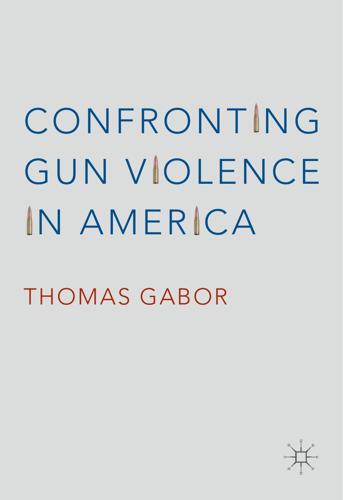
Confronting Gun Violence in America
by
Thomas Gabor
Published 12 Sep 2016
My work as an Expert Witness for the Canada Border Services Agency in cases involving the initiative to arm all officers has provided an important perspective with regard to the new threats and priorities of agencies patrolling the borders of countries around the world. Cases in which I have been retained by the Attorney General of Ontario (Canada) have compelled me to reflect on the benefits and downsides of the imposition of mandatory minimum sentences for offences involving firearms. My stint as a Visiting Scholar at the Research and Statistics Division of Justice, Canada, allowed me, among other things, to explore the scholarly evidence on the impact of mandatory sentences on gunrelated crime and to determine that the conventional wisdom that these sentences do not work was not always correct.

Hacker, Hoaxer, Whistleblower, Spy: The Story of Anonymous
by
Gabriella Coleman
Published 4 Nov 2014
On December 13, 2011, a few AntiSec members pulled the journalist Quinn Norton and me into a channel to ask a question: Antisec: will journos cover stuff that’s probably Antisec: deeply illegal Antisec: lol quinn: yes, but framing is important Antisec2: Not illegal like ddos or leaking some cops emails. ;) biella: deeply as opposed to surface illegal Anon: we have a table of illegal categories […] ***Anon checks the cheatsheet biella: Anon, do you?? biella: lolll ***Anon thinks ‘fuck we r screwed’ quinn: is this like a mandatory minimums kind of chart? quinn: heheh Anon: hahaa biella: OFF THE CHARTS illegal Soon after this chat, an AntiSec member casually informed me that they possessed credit card data they intended to use for charitable donations While he kept the source database a secret, this remained one of the few instances where sensitive information was sprung on me.
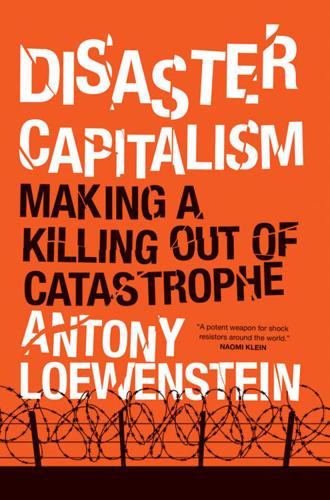
Disaster Capitalism: Making a Killing Out of Catastrophe
by
Antony Loewenstein
Published 1 Sep 2015
Poor conditions at the facility, riots, unsanitary food, and lax security were all good reasons cited for closing the center down. The reasons for the US obsession with imprisonment are not very mysterious. Politicians have feared being seen as “soft on crime”—a fear driven by a tabloid press that celebrated harsh sentencing. Attacks on the poor and underprivileged neatly dovetailed with the popularity of lengthy mandatory minimum sentences and the “three-strike” laws that put people behind bars for life for stealing a chocolate bar. Enormous numbers of people were jailed without any chance of parole. The National Research Council released a 464-page report in 2014 detailing why these policies had been enacted: “Deeply held racial fears, anxieties and animosities likely explain the resonance of coded racial appeals concerning crime-related issues.”8 The possibility of serious sentencing reform has remained distant, because prison contractors lobby legislators for tougher judgments, improving their revenue.
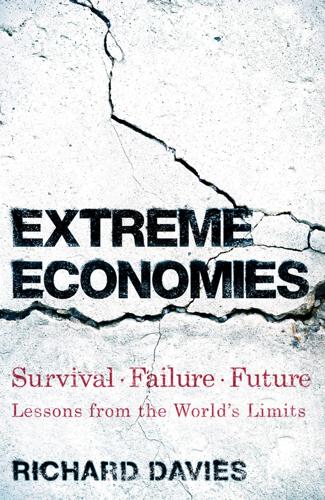
Extreme Economies: Survival, Failure, Future – Lessons From the World’s Limits
by
Richard Davies
Published 4 Sep 2019
The state ratchets up mandatory sentences for repeat offenders at an extraordinary rate, the upper limit doubling with each conviction: stealing a car, for example, carries a mandatory sentence of up to 12 years as a first offence and 24 years for a second. On top of this there is another rule – a kind of ‘four strikes and you’re out’ – which means a fourth offence can have a mandatory minimum of 20 years and a maximum of life in jail. I meet one ex-Angola resident, Louis, who spent 20 years in Angola on a drug charge. He explains his case isn’t the worst: Timothy Jackson, a man caught stealing a jacket from a shop more than 20 years ago, is set to spend the rest of his life in Angola.

Dopesick: Dealers, Doctors and the Drug Company That Addicted America
by
Beth Macy
Published 4 Mar 2019
Whereas Bill Metcalf, the ATF agent largely responsible for Jones’s twenty-three-year prison sentence, took inspiration for his life’s work from the image of the brain frying like an egg and Nancy Reagan’s “Just Say No” slogan, Alexander and Stevenson saw fearmongering and institutional racism in mandatory minimum sentences, three-strikes sentencing laws, the abolishment of parole, and “stop and frisk” policing. This was Ronnie’s third time in prison. He already knew that one in three black men was destined to end up incarcerated, only to find himself branded as a felon and second-class citizen the moment he got out, blocked from the mainstream economy and propelled into a dystopian loop of jail, joblessness, and back to jail.

Three Felonies a Day: How the Feds Target the Innocent
by
Harvey Silverglate
Published 6 Jun 2011
Harvey Silverglate, an experienced and astute criminal lawyer, makes a compelling case that federal prosecutors are abusing their power by using the criminal law to prosecute law-abiding citizens whose conduct is arguably covered by extremely vague criminal statutes that are capable of reaching acts which are believed to be lawful by those who commit them. These prosecutors threaten to indict underlings for conduct that is even further away from the core of criminality unless they cooperate against the real targets. Because federal criminal law carries outrageously high sentences—often with mandatory minimums—these prosecutorial threats are anything but illusory. They turn friends into enemies, family members into government witnesses and employees into stool pigeons. Silverglate believes that we are in danger of becoming a society in which prosecutors alone become judges, juries and executioners because the threat of high sentences makes it too costly for even innocent people to resist the prosecutorial pressure.
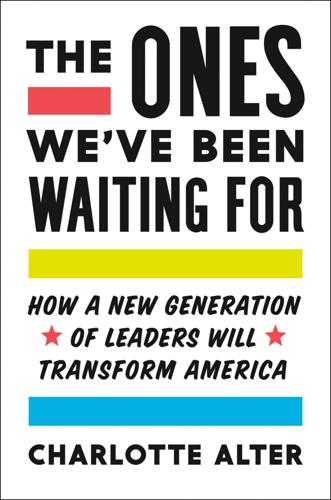
The Ones We've Been Waiting For: How a New Generation of Leaders Will Transform America
by
Charlotte Alter
Published 18 Feb 2020
Black and brown kids bore the brunt of these punishments and were more likely to be suspended, kicked out of school, or arrested for even minor infractions. This was the beginning of the “school-to-prison pipeline,” in which over-policing of school misconduct leads kids into a pattern where they face real-life jail time. These zero tolerance policies echoed the criminal justice system, where flawed mandatory minimum sentencing guidelines forced judges to impose tough sentences for drug possession and other minor infractions, a brutal overreach that unfairly targeted young people of color. Decades later, in 2008, the American Psychological Association found that zero tolerance policies were often “severe and punitive in nature” and not particularly effective at keeping schools safe.
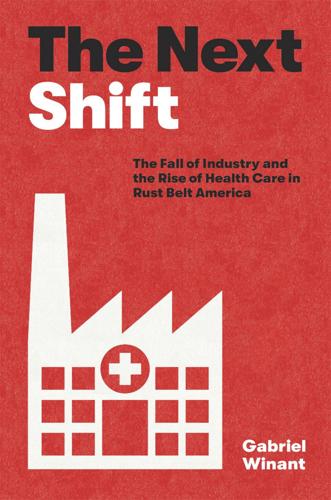
The Next Shift: The Fall of Industry and the Rise of Health Care in Rust Belt America
by
Gabriel Winant
Published 23 Mar 2021
As industrial collapse reduced tens of thousands of people to labor market surplus and conservative administrations slashed the welfare state, punishment became an attractive strategy for managing poverty. While mass incarceration’s roots were deep and complex, it accelerated in the context of a collapsing labor market. In 1981, the Pennsylvania General Assembly flouted a blue-ribbon commission’s recommendation of reduced and rationalized sentencing. The next year, the state passed a mandatory minimum sentence law. A 1985 state commission reported, “The past five years have been marked by major and continuing increases in Pennsylvania’s county and state incarcerated populations.” Between 1979 and 1984, average daily population of jails and prisons grew by 58 and 60 percent, respectively—additionally swollen by the deinstitutionalization of mental health care and the cutting of welfare support, as historian Anne E.
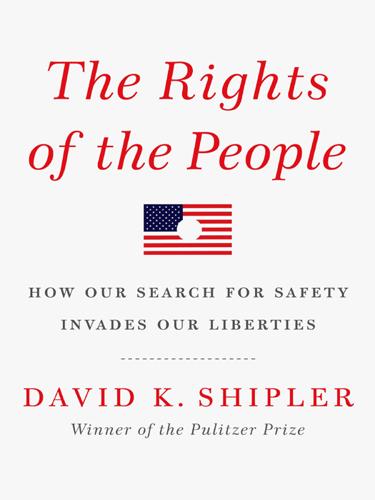
The Rights of the People
by
David K. Shipler
Published 18 Apr 2011
Attorney’s office in D.C. is the only one in the country to handle “arrest-generated” cases—the products of street arrests by local police rather than investigations and grand jury indictments. In general, the office refers drug cases to federal court if they involve at least one hundred grams of heroin or five hundred grams of powder cocaine, which carry a five-year mandatory minimum sentence, or fifty grams of crack, which has a ten-year minimum. If the drugs don’t “make weight,” in the prosecutors’ parlance, the defendant may still be charged in federal court if he’s a major narcotics or gang figure, or if the police want to press him to cooperate in a wider investigation. 17.
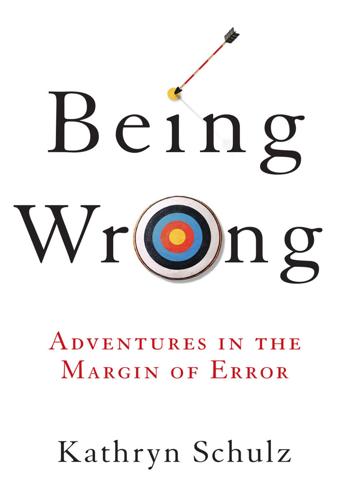
Being Wrong: Adventures in the Margin of Error
by
Kathryn Schulz
Published 7 Jun 2010
Or you could sport anti-Kerry campaign buttons featuring pictures of waffles or of Heinz ketchup bottles—the latter being an oblique reference to his wife, Teresa Heinz Kerry, and a direct reference to his supposed indecisiveness: “57 positions on every issue.” Some of the allegations of waffling leveled against Kerry were bogus—such as the suggestion that serving in Vietnam is incompatible with viewing it as a moral and political disaster. Others were legitimate—such as the claim that he changed his mind on mandatory minimum sentences not out of a principled reconsideration of the issues but because of standard “tough on crime” political pressure. But the validity (or lack thereof) of these charges isn’t the point. It never was. In our political culture, whether or not a leader has good reasons for changing his mind is generally less important than the fact that he changed it in the first place.
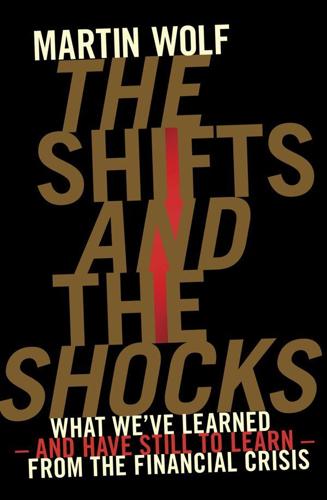
The Shifts and the Shocks: What We've Learned--And Have Still to Learn--From the Financial Crisis
by
Martin Wolf
Published 24 Nov 2015
On capital requirements, regulators agreed to raise common equity, plus retained earnings, to 4.5 per cent (up from 2 per cent in Basel II) and ‘Tier 1’ capital (including preference shares and perpetual subordinated debt) to 6 per cent of ‘risk-weighted assets’. They agreed to add a further 2 per cent in ‘Tier 2’ capital (subordinated debt with a maturity of more than five years) and a mandatory minimum 2.5 per cent ‘capital conservation buffer’, to give room before a firm fell to the regulatory floor. They also decided to add up to a further 2.5 per cent of risk-weighted assets in a ‘countercyclical buffer’ and a further 1–2.5 per cent extension of this countercyclical buffer for global systemically important banks (G-SIBs).
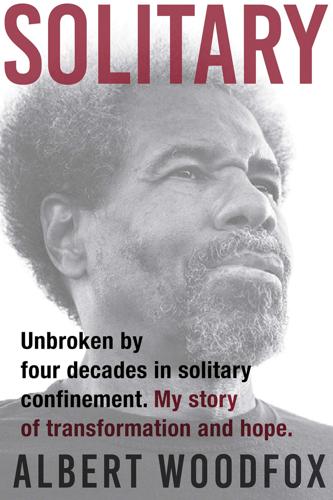
Solitary
by
Albert Woodfox
Published 12 Mar 2019
Sentencing Commission found that between 2012 and 2016 (the length of the study), black men got sentences 19.1 percent longer than white men for the same federal crimes. A 2014 study published by the University of Michigan Law School found that, all else held equal, black arrestees were 75 percent more likely to face a charge by prosecutors with a mandatory minimum sentence than white arrestees, for the same crime. In 2018, black people in Manhattan were 15 times more likely to be arrested for low-level marijuana charges than whites, according to a New York Times investigation. In Missouri that same year, the state attorney general’s office reported that black drivers in Missouri were 85 percent more likely than whites to be stopped by police—a 10 percent increase over 2017.
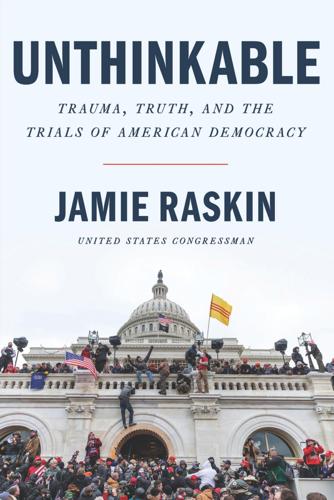
Unthinkable: Trauma, Truth, and the Trials of American Democracy
by
Jamie Raskin
Published 4 Jan 2022
I spent a decade driving the first ninety days of each year from the Beltway to Route 50 to Annapolis, where I represented the people of Silver Spring and Takoma Park in the Maryland State Senate, serving several years as senate majority whip, leading floor fights and backroom brawls to abolish the death penalty, pass marriage equality, repeal mandatory-minimum drug sentences, increase the minimum wage, and enact the nation’s first National Popular Vote Interstate Compact. Hannah, Tommy, and Tabitha used to love to come and spend the weekend with me and Sarah there, staying at one of the haunted local inns like the Governor Calvert House or the Robert Johnson House.

Small Wars, Big Data: The Information Revolution in Modern Conflict
by
Eli Berman
,
Joseph H. Felter
,
Jacob N. Shapiro
and
Vestal Mcintyre
Published 12 May 2018
Gangs, meanwhile, may do favors for citizens, provide them protection, and often include their children and neighbors among their ranks. The intuition in the Akerlof and Yellen model was that when deciding whether to cooperate with gangs or law enforcement, citizens took into account how the government would treat gang members it arrested. If the government was expected to be overly punitive, imposing harsh mandatory minimum sentences for selling small amounts of drugs, for example, then citizens would choose not to share information, making it hard for the government to arrest and prosecute gang members. If, however, gang members were violating community norms but the prospective punishments they faced were acceptable, then citizens would tend to share information with police.
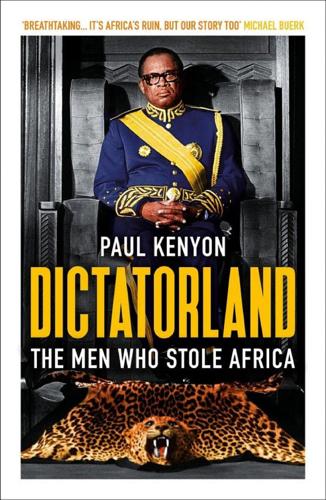
Dictatorland: The Men Who Stole Africa
by
Paul Kenyon
Published 1 Jan 2018
During the 1980s it responded to the competition by doubling its output, until it controlled forty per cent of the market. But there was only so much chocolate the world could consume. Faced with a seemingly endless queue of eager cocoa exporters, chocolate manufacturers chose the cheapest. Houphouet-Boigny was not going to be pushed around. He had promised to pay his farmers a good price, a mandatory minimum for each kilo sold at the farm gate, and he was determined not to let them down. But he couldn’t control world markets. Forced to sell at a steadily reducing price, he continued paying his farmers what he had promised, leaving the Côte d’Ivoire government making a loss. Houphouet-Boigny’s farm-gate prices were twice as high as any other cocoa-producing country.
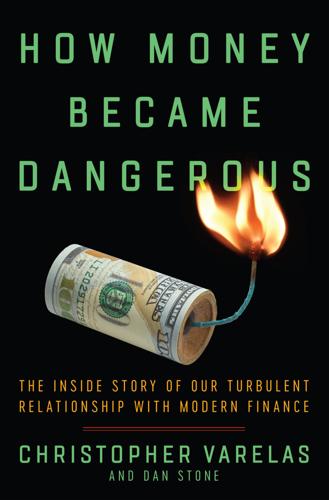
How Money Became Dangerous
by
Christopher Varelas
Published 15 Oct 2019
Had I known all these details, I would have certainly packed everything I owned into my Lexus and driven down the coast to be with my girlfriend in LA.” The feat that Equinix needed to pull off was hard to understand, let alone accomplish. To a normal person, it was as if Andy were speaking in tongues when he described it: “We had to complete a 32-for-1 reverse stock split to take the stock price back above the mandatory minimum $1 threshold to avoid getting delisted, simultaneously renegotiate the company’s debt with the bondholders, raise new capital through convertible debt, sever and divest several underperforming assets, renegotiate unfavorable leases locked in during the real estate peak, lay off more staff, and sell the hell out of our remaining assets to get back to EBITDA and cash-flow positive.”
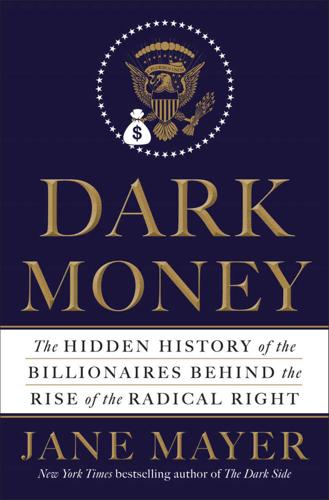
Dark Money: The Hidden History of the Billionaires Behind the Rise of the Radical Right
by
Jane Mayer
Published 19 Jan 2016
Later the Kochs presented themselves as champions of criminal justice reform, but while they were active in ALEC, it was instrumental in pushing for the kinds of draconian prison sentences that helped spawn America’s mass incarceration crisis. For years among ALEC’s most active members was the for-profit prison industry. In 1995, for instance, ALEC began promoting mandatory-minimum sentences for drug offenses. Two years later, Charles Koch bailed ALEC out financially with a $430,000 loan. In 2009, the conservative movement in the states gained another dimension. The State Policy Network added its own “investigative news” service, partnering with a new organization called the Franklin Center for Government and Public Integrity and sprouting news bureaus in some forty states.

The Alignment Problem: Machine Learning and Human Values
by
Brian Christian
Published 5 Oct 2020
Rather than release through prediction, I would argue, we need to be less punitive at the front end and remain extremely conscious of the racial imbalances in our sentencing laws. Reducing the crack‐cocaine disparity to 18:1 is a step in the right direction; however, other immediate steps should include eliminating mandatory minimum prison terms, reducing drug sentencing laws, substituting diversion and alternative supervision programs, and decreasing the imposition of hard time. The research suggests that shortening the length of sentences (i.e. releasing low‐risk convicts earlier than the expiration of their term) would not have as great an effect on prison populations, long term, as cutting admissions.

The Gods of New York: Egotists, Idealists, Opportunists, and the Birth of the Modern City: 1986-1990
by
Jonathan Mahler
Published 11 Aug 2025
And they were, increasingly, selling it everywhere—not only in poor outer-borough neighborhoods, but around Madison Square Garden and Times Square and in Washington Square Park. The epidemic had prompted a major shift in the nation’s drug policy. In the fall of 1986, President Reagan had signed the new Anti–Drug Abuse Act into law, defining crack users and dealers as a different class of criminal. Anyone convicted of possessing five grams of crack now faced a mandatory minimum sentence of five years without parole. It was an inherently biased law: One would need to possess five hundred grams of powdered cocaine—effectively the same drug—to be subjected to the same sentence. And yet even as the nation’s prisons were filling up with crack dealers and users, the epidemic was continuing to accelerate.
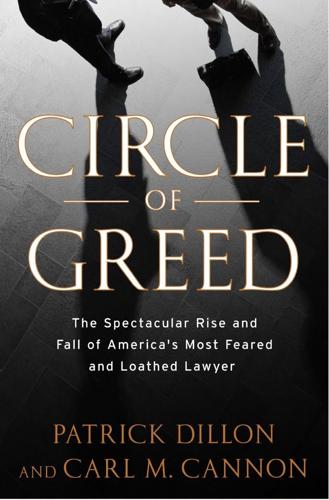
Circle of Greed: The Spectacular Rise and Fall of the Lawyer Who Brought Corporate America to Its Knees
by
Patrick Dillon
and
Carl M. Cannon
Published 2 Mar 2010
Mountain climbers have a name for a similar circumstance as they near the summits of the world’s tallest peaks, when the oxygen grows thin and no misstep is without consequence. They call it “the death zone.” * As it turned out, Irving served a relatively brief period on the federal bench. In September 1990, objecting to the 1987 mandatory federal sentencing law, he became the first federal jurist in the nation to resign in protest over “mandatory minimums.” 10 MAKING ENEMIES The next morning, March 16, 1988, the battle resumed. Goldman led off by asking the Chicago law professor to explain what the term risk meant to him with regard to Nucorp. Fischel delivered a haymaker, saying that Nucorp’s collapse mirrored a large and precipitous depression in the oil industry.
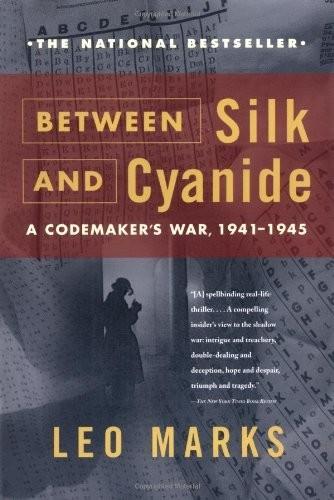
Between Silk and Cyanide: A Codemaker's War, 1941-1945
by
Leo Marks
Published 1 Jan 1998
I envied their togetherness almost as much as I marvelled at their shorthand. The fingers of feeling Be they gloved by the shy Or pointed bare and bold By the shyer still Seek to find By fumbling or by fate Another hand to clutch…[3] I left it at that, not only because it contained the mandatory minimum of twenty-six words but because it had left me. When I looked up they had finished. I collected their poems and messages and spread them in front of me for checking. I hoped there'd be no failures. If there were, I wouldn't tell Wilson. Their failure would be mine and there would be time to put it right.